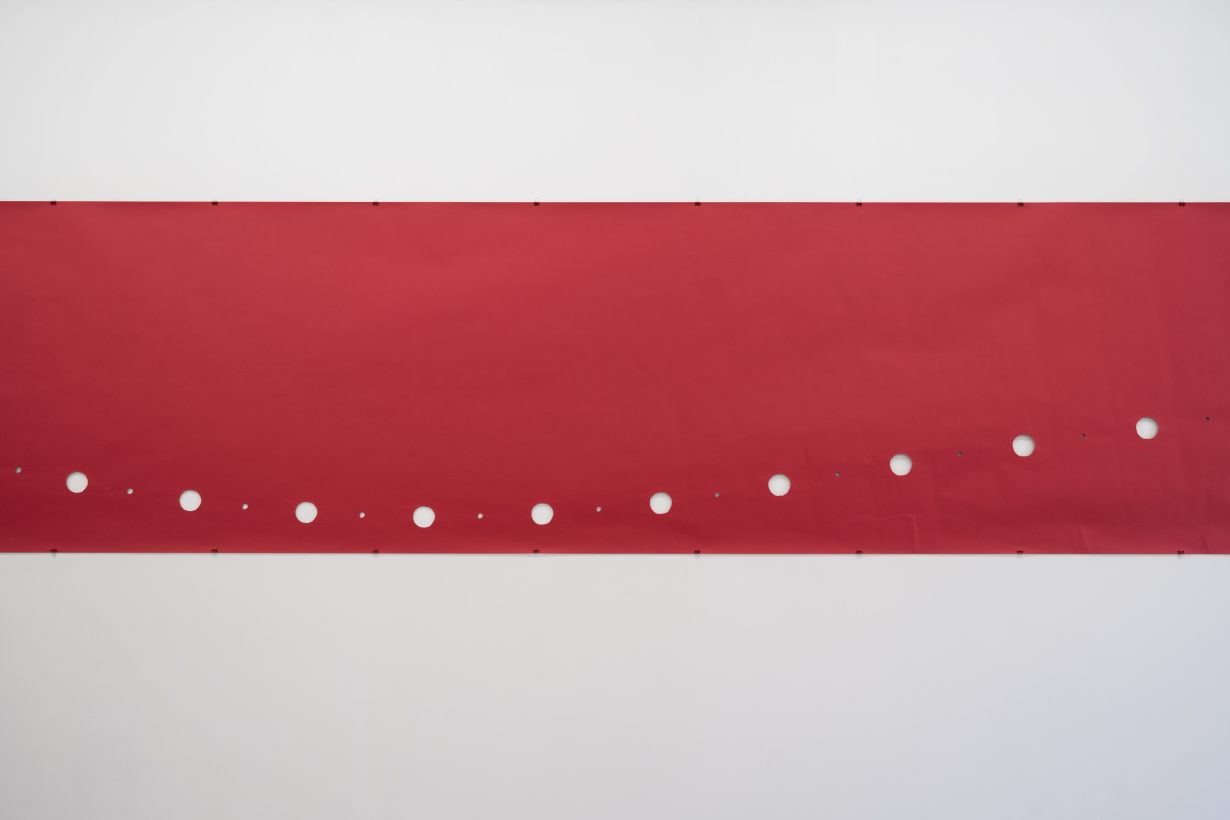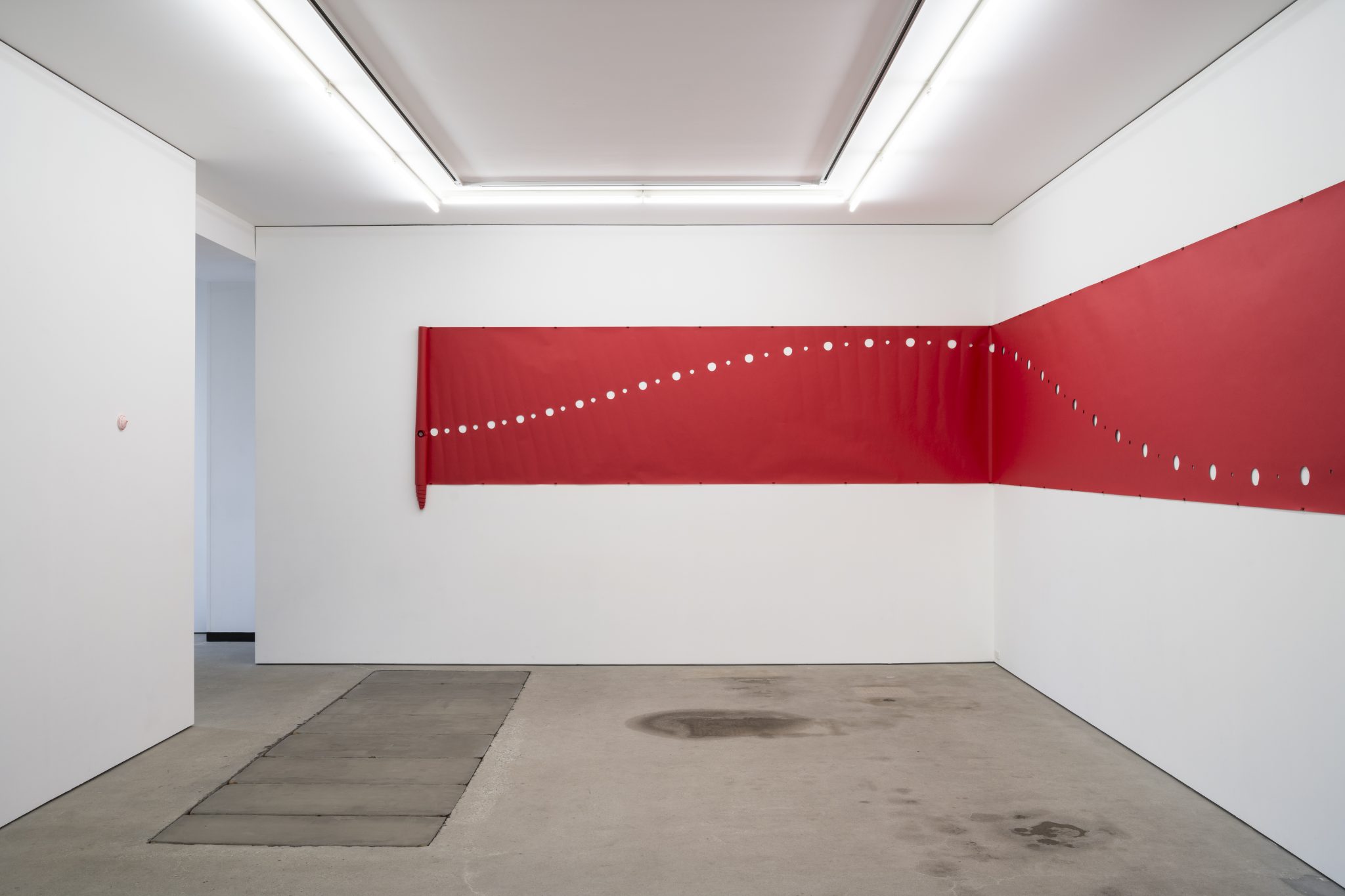One is Many Many is One at Hagiwara Projects, Tokyo is so much more than first meets the eye
At first glance it appears simple. The white walls of the gallery are decorated by a continuous, head-height, friezelike red band. It’s a roll of paper, bulldog-clipped to the wall. We know it’s a roll of paper because there’s more to it than what’s unfurled, to which a still-rolled section at either end testifies. It’s as if the artist intends to bury any sense of illusion (which is what art is supposed to do) beneath a veneer of honesty (normally the domain of real life). The frieze is decorated by an undulating line of alternating smaller and larger holes that have been cut into the paper and through which the gallery’s white-washed wall shines. It looks like a chart of the elliptical motion of a star or planet across the night sky, swooping up and down as the paper band traverses the gallery space. Gently suggestive of something without definitively expressing anything. An interior designer’s wet dream. But it also has the kind of beauty we’re used to associating with minimalist artworks. Assuming you’re into Minimalism, that is. While indisputably elegant, Yoko Terauchi’s art has a way of leaving you feeling slightly off balance.
In fact, the multiple ‘holes’ are the product of a single cone cut into the rolled paper. You can see how it works if you stare at the rolled end. And the evidence is in front of you in the form of the cone that was cut out from the roll and that’s also attached to the wall. Like the work of a magician intent on revealing their trick. Except this cone isn’t made up of the discarded paper; rather it’s cast from that but made of plaster. You start to get the feeling that nothing is as it appears even though everything appears to be so straightforward and simple.

The truth is that the installation, One is Many Many is One (2023), is at one and the same time even more simple than it appears to be, and even more complex. Everything you need to know is in the title. And before that it was already in the construction of the work. And yet it makes you rethink the operations of your perception.
The installation comes with a poem by the artist just to make absolutely sure: ‘One is Many Many is One / When we count something as “one” / This is the beginning of dividing the world / Which in fact One as a Whole But, can we see whole / of the universe? Can we count one?’ Which, in its apparent contradictions on the subject of oneness, might suggest connections with certain teachings of the Buddha. And yet, what’s in the gallery is material not spiritual. So to veer towards the latter might smack of folly. And it would be fair to say that this extraordinary installation also tests your proclivities for overthinking too.
One is Many Many is One at Hagiwara Projects, Tokyo, 1 November – 2 December
